Author —— User: -llwcc To be honest, I do not like the ambiguous name “Lincoln Z”. For car enthusiasts like us, who are more emotional and literary, heritage and depth are seemingly ethereal yet extremely important. Clearly, the name “Zephyr” carries more meaning, which is why I prefer not to use the official generic name. However, these six letters still adorn the rear of the car, perhaps calling it Lincoln Z is just to make it easier for everyone to remember. Regardless of its name, I have always had a strong interest in this car. As a former Lincoln owner, my affinity for the brand is quite high, coupled with the elegant appearance of the Zephyr, its affordable pre-sale price, and the somewhat vague dynamic experience of the EVOS on the same platform, I visited the dealership three times before the test drive car arrived, and the sales staff thought I was a bit overly enthusiastic. Let’s have a brief experience; it has a distinct personality and offers great value for money, provided you can accept some issues.
Exterior
The coupe-like silhouette reminiscent of the Audi A7, Lincoln’s signature continuous taillights, illuminated three-dimensional badges, and smooth lines—there’s no need to elaborate on how good it looks, right? I’m not particularly fond of the so-called iCool (sport package) version; I believe the initial version of the Zephyr should not look like this. Or rather, in my outdated mindset, I do not think a Lincoln should look like this. Various blacked-out kits, special wheel designs, red brake calipers, and red interiors clearly show that Lincoln is making a strong effort to appeal to the younger market, which may gain recognition from many, but I certainly do not belong to that group.
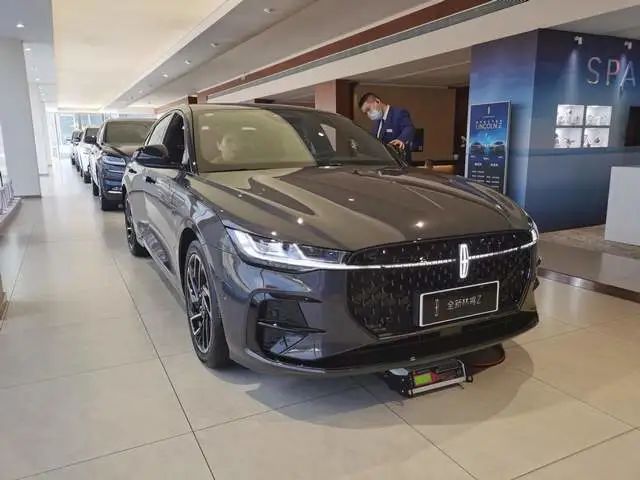
(Various glossy black trim clearly defines the identity of the sport version)
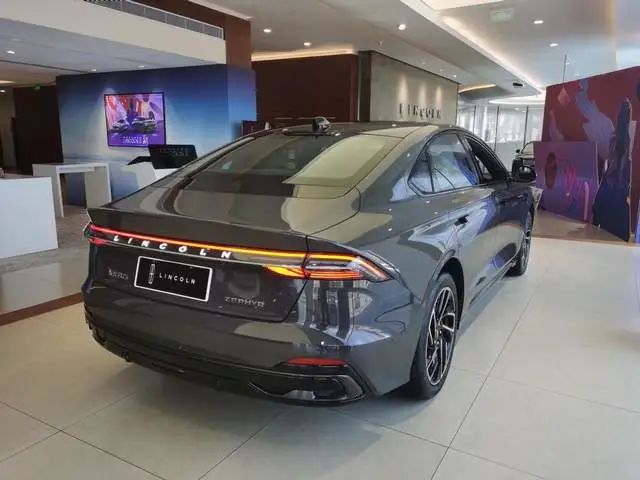
(I like the taillights and the badge)
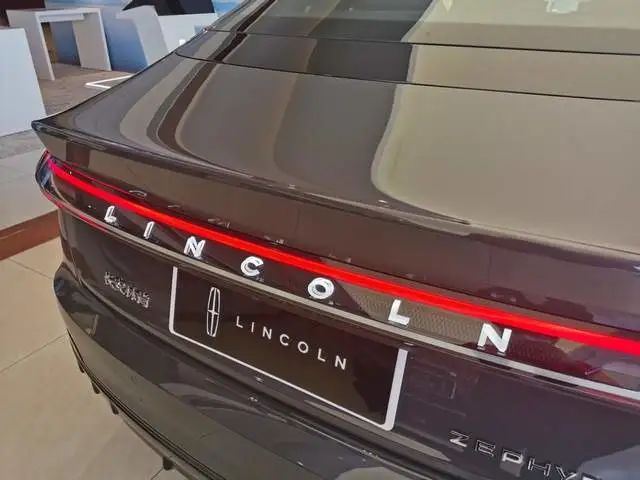
(And this badge has a three-dimensional effect, enhancing its quality) Compared to the iCool display car in the showroom, I prefer the iEnjoy (luxury package) version of the test drive car, with just the right ice blue paint and luxurious wheels, complemented by appropriate chrome trim. The interior can also be selected in light gray, which is how a Lincoln sedan should look—combining youthfulness and luxury while retaining American flavor; it looks fantastic.
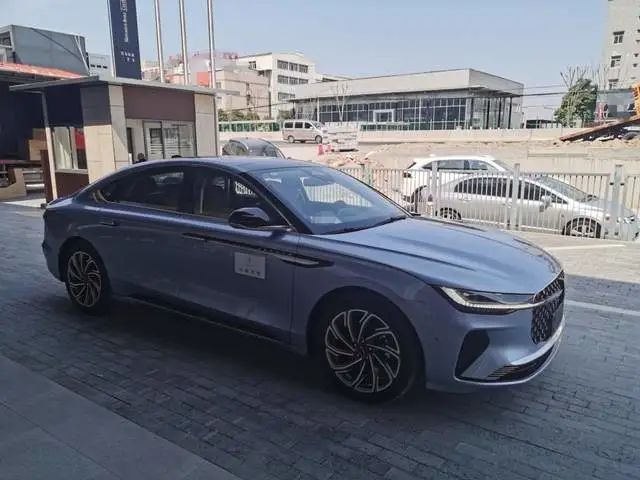
(The luxury version is the best) If I must point out a flaw, it’s that the continuous light strip at the front is pixelated in the middle, rather than being a seamless line, reminiscent of the daytime running lights from the early days of LED technology (as seen in my first image), which somewhat diminishes the sense of luxury.
Interior
There are quite a few points to criticize about the interior. Starting with the design, the horizontally spread layout makes the interior feel spacious, and the large screen contributes positively to this. However, I am quite dissatisfied with this large screen. Regardless of its exaggerated shape, many people may like such a large screen, the key issue is that this built-in interface is identical to Ford’s and is not particularly responsive; at times, it even lags, and after using it for twenty to thirty minutes, the screen surface becomes quite hot, which is noticeable during operation—though for such a large screen, this is almost an unavoidable problem, it’s still necessary to describe it objectively. By the way, I really dislike exaggerated large screens. Of course, this large screen has its advantages; at least the visual effect is quite stunning, and it is extremely feature-rich, even allowing you to watch the vehicle’s user manual and some usage scenario videos, and the split-screen and screen mirroring functions are fairly usable.
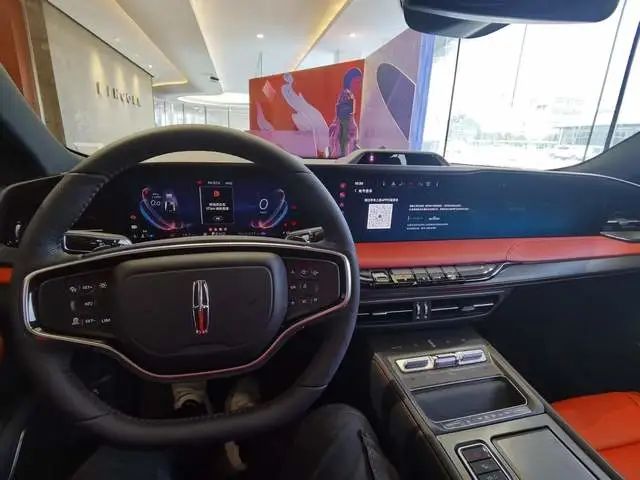
(I dislike the red interior and the exaggerated large screen) Overall, the modern feel of the interior is strong, and in some areas, it is evident that Lincoln aims to enhance the quality of the interior, including the leather-wrapped wireless charging pad, the matte finish of the interior door handles, and the tactile feedback of the central control buttons, all of which are positive aspects. Compared to the EVOS/Mondial, which also features an exaggerated large screen design, the interior design and quality have made significant differences, marking a considerable improvement over the old Lincoln models. However, with positive aspects come negative ones; for instance, the adjustment button for the rearview mirror on the display car I experienced was very loose, with a lot of play, and the hard plastic material used on the lower door panel felt quite cheap; the buttons on the steering wheel also lacked quality, although they are relatively easy to use, the small size of Lincoln’s traditional steering wheel buttons makes them not particularly user-friendly, while the shape of the steering wheel does pay homage to older Lincoln models.

(This part has excellent actual quality)

(But the large screen is also a fingerprint collector) Another detail issue is that since the last QX60, I have been paying attention to the quality of door closing in luxury brand vehicles. The Zephyr performs well in this regard, but compared to traditional Lincoln models (such as the Nautilus), the effort and sound feedback when opening and closing the doors are somewhat lacking—though this is not a significant issue, just a minor observation worth mentioning.
Space and Seating
This is another aspect that surprised me greatly. As a new generation Lincoln model, the Zephyr has not abandoned comfort in seating. The front seating experience is adequate, with comfortable seat materials, adjustable headrests, and both the seat and headrest allow me to find a suitable driving position. Ventilation and heating functions for the seats are equipped in all but the base model, and higher trims even offer multiple adjustments and massage functions; Lincoln has never skimped on configurations. One existing issue is that the armrest on the door panel and the central armrest are clearly not at the same height, which can be uncomfortable for some drivers’ habits, making it a bit awkward to rest an arm during long highway drives.

(I didn’t take many photos of the front row, let’s look at the back row directly) What surprised me was the back row. After adjusting my driving position in the front, I opened the back door and was completely taken aback by the generous legroom in the Zephyr’s back row. After sitting down, my knees were almost a forearm’s length away from the front seat back; if the front driver is a girl around 160cm tall, I could even stretch my legs straight in the back row—what an exaggerated space! The headroom, however, is not as surprising; the coupe design leaves me with only 3-4 fingers of space above my head. When sitting upright, the angle of the backrest is reasonable; I previously suspected from the pictures that the backrest would be a bit upright or that the headrest would press against my cervical spine, but after actually sitting down, I found that this was not the case, and the seating experience was quite good.

(The back row even has independent makeup mirrors and lighting, very high-end) Storage space is quite ordinary; most cars I have experienced recently have not surprised me in terms of storage space, and the current popular design style often prompts manufacturers to raise the center console, leaving only a small area for phone placement and cup holders on top, while the lower part of the center console has a large storage compartment. However, the trunk size and depth are fine, but due to the large coupe design, the opening is very narrow, making it difficult to fit items into the trunk due to the opening’s limitations, and combined with the non-foldable rear seats, the flexibility of storage is somewhat compromised.
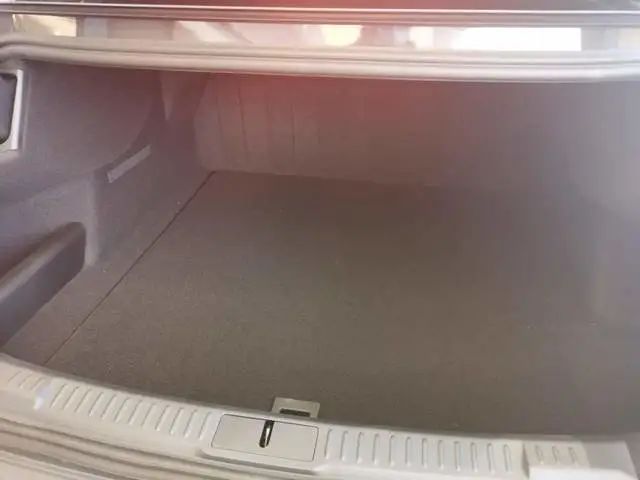
(The space is okay, but the opening is too small)
Driving and Handling
After the static experience, I waited with the sales staff for a previous customer to return from their test drive. The sales staff asked me, “Are you satisfied with the static experience?” I nodded, and the sales staff confidently said, “You don’t have to worry about the dynamic experience; this car drives better than any other in its class.” Upon hearing this, I felt something was off, but I also had a glimmer of hope that maybe it would be perfect? Soon, the ice blue test drive car returned with its graceful figure. Half an hour later, after getting out of the driver’s seat, I was already contemplating “how to express the shortcomings diplomatically”.
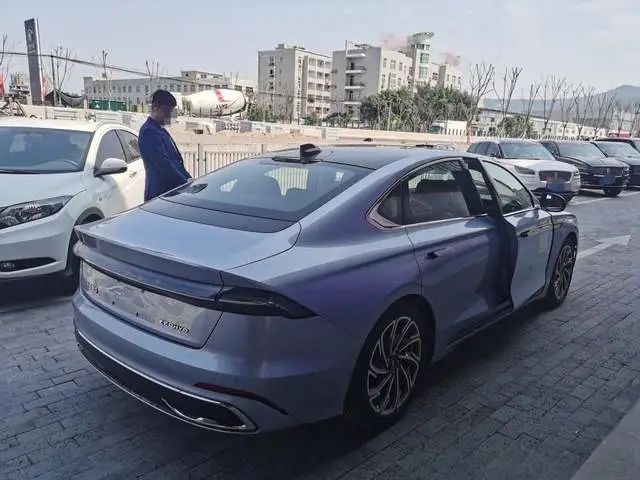
(I heard that there has been a queue for test drives these days) First, regarding the performance of the powertrain, Lincoln never offers low-power engines that are just for show. This 246-horsepower high-power engine in this car, which weighs over 1.6 tons, feels quite nimble, and you can sense that there is ample power reserve in the commonly used non-highway range. The turbo lag is not abrupt, and there is a smooth acceleration feel at different throttle openings; downshifting is not particularly quick but ensures smoothness, and with my driving habits, I did not experience any jarring sensations. However, I must criticize the brake feel; the pedal effort is quite light and vague, and a gentle press can push it down a long way, and the Zephyr’s braking force comes on very quickly and unevenly, causing noticeable pitching regardless of how you press it. I cannot achieve smooth braking at traffic lights, which results in a significant pitching sensation. However, this may also be due to the difference in driving habits caused by my own car’s brake pedal being quite firm, so I recommend everyone to experience this aspect personally.
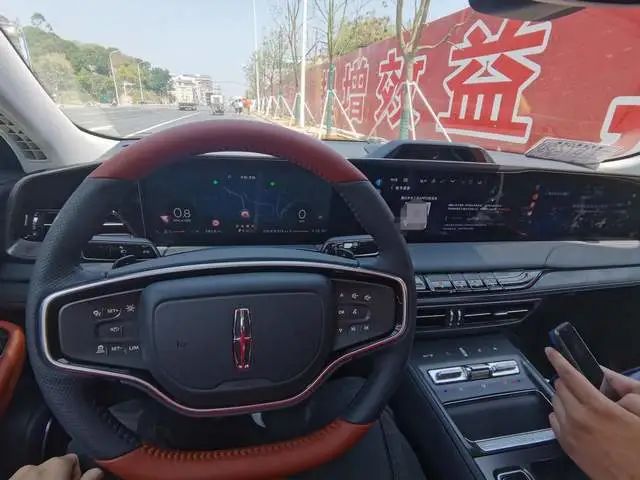
(This interior color scheme is really ugly; the gray and beige looks much better) In terms of handling, I also have to criticize the steering feel, which has a peculiar and indescribable feedback: at first, I felt like I hadn’t turned off the lane departure warning function, as there was a strong centering force opposing my grip, but after driving for a while, this feeling disappeared. The steering response is clearly graded with speed; it is very light at low speeds, and as speed increases, it feels somewhat stepwise heavier; the angle response is quite uniform, but the electronic feel is very strong, making it feel like I am stirring a rice vat or an oil tank, which is not the steering feel I prefer. However, the directional feel is not vague; at least I can feel where the front of the car is going, and during quick lane changes, the chassis holds up well, providing a sense of safety.
NVH
The sound insulation is worth mentioning; first, the environmental sound insulation is quite good, reaching an excellent level. The test drive route was a newly repaired national road, with mostly good road conditions, but a lot of large vehicles, chaotic traffic, and noisy environments. The Zephyr maintains Lincoln’s consistent high standard in environmental sound insulation, providing a strong sense of isolation; opening and closing the windows feels like two different worlds. Even with large trucks frequently passing by, once the windows are closed, people inside can converse quietly without being disturbed, providing a very pleasant experience. I really enjoy this sense of being isolated from the outside world, creating a “private world” feeling. Once on the move, wind noise is also well controlled, and road noise is not significant, but this may be masked by tire noise. The tire noise in this car is particularly noticeable; considering that the test drive route was all newly paved asphalt, I feel that this tire noise performance is unreasonable. It may be due to the Goodyear Efficient Grip Performance tires not being compatible with this asphalt surface, or it could be due to the “Performance” enhancement, but the annoying tire noise is indeed present.

(You see the REVEL sound system? Excellent environmental sound insulation pairs well with good audio) The shock absorption performance also has some unexpected elements. First, the shock absorption is not in the traditional Lincoln “big boat” style; the chassis is somewhat firm, and the feel over speed bumps is quite pronounced, very flexible, providing road feedback without being harsh; it performs well on well-paved roads, but on poorly maintained gravel roads, you can feel a bit too much feedback, with some fine vibrations transmitted into the cabin, which is not perfect.
Value for Money and Purchase Suggestions
Now we arrive at my favorite part, the purchasing guide (not really). The high cost-performance ratio of the Zephyr is well-known; even if you don’t know, just look at a configuration sheet for a minute, and you will agree with this statement. Lincoln has always been a high-level player in terms of cost performance, whether it was the imported MKC/MKZ or the later domestically produced Aviator/Adventurer series, the dazzling array of configurations and not particularly expensive prices have always coexisted in Lincoln’s lineup.
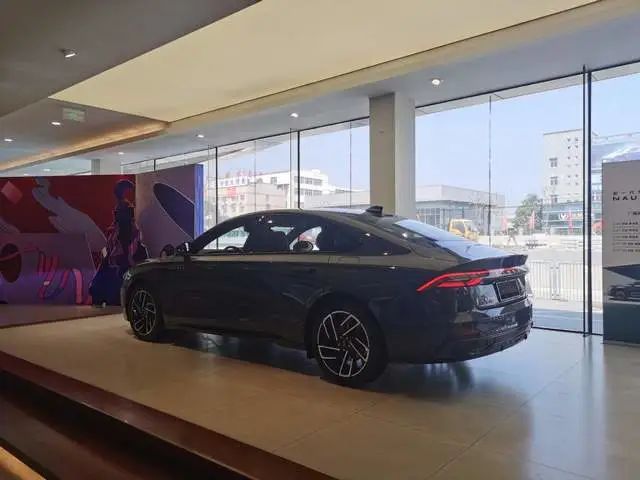
(This angle is simply stunning) Back to the Zephyr, the configurations are generally divided into two factions: the sport and luxury packages (referred to as iCool and iEnjoy by the manufacturer). The specific configuration levels still follow Lincoln’s traditional Respect/Enjoy/Grace/Glory grading model. It is important to note that the base model, Respect, does not offer the luxury package; if the budget is very limited, you can only consider the sport version. However, the Respect and Enjoy versions differ by only 17,000 yuan, and below this, you can obtain some basic driving assistance equipment and comfort features like seat heating/ventilation/memory, along with front radar and other small configurations, which I believe are worth the price difference. If your budget allows, the Grace version is the most recommended across the board; although it is 30,000 yuan more than the Enjoy version, the additional configurations are numerous and cannot be summarized in a short time, and this enhancement will definitely bring the true luxury car experience. In summary, in my personal view, the cost-performance ranking is Grace > Enjoy ≈ Respect. As for the top-tier Glory version? The price difference of 30,000 to 40,000 yuan only adds automatic parking, Bluetooth key, and fragrance configurations; if you buy the luxury version, you may also get multi-adjustable and massage seats as a bonus, but overall, I haven’t found a compelling reason to spend that extra money. Regarding the timing of purchase, currently, there are no discounts, but the cost performance is already quite high; however, I still recommend being patient, as Lincoln’s discounts are usually not large, but one or two thousand yuan is still money.
Conclusion
I believe Lincoln’s current direction is correct, targeting a younger customer base with improved economic capabilities. The Zephyr is undoubtedly suitable, as this car encompasses almost all the factors that young, ambitious ordinary consumers appreciate: good looks, trendy interior, spaciousness, strong power, a prestigious brand, and an extremely high cost-performance ratio. Although there are still some flaws in product strength, this path is definitely the right one.